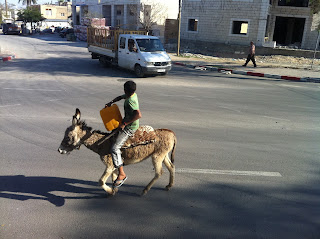 A few weeks ago, Dean Knisely came up to me and said that he had been talking with a parishioner whose daughter (Rev. Emily Mellot) has been offering Ashes to go on Ash Wednesday during morning rush hour at the commuter rail station near her church, Calvary Episcopal in Suburban Chicago. “We should try this here” he said and by “we” he meant me. This was the job for the young curate.
A few weeks ago, Dean Knisely came up to me and said that he had been talking with a parishioner whose daughter (Rev. Emily Mellot) has been offering Ashes to go on Ash Wednesday during morning rush hour at the commuter rail station near her church, Calvary Episcopal in Suburban Chicago. “We should try this here” he said and by “we” he meant me. This was the job for the young curate.So I made a lovely sign and some fliers, shamelessly borrowing a prayer and explanation from the Ashes to Go website and adding in information on our Lenten Programs and Service Schedule. I recruited a parishioner, Cliff, to go with me as a thurifer and frankly just company. This was not something I wanted to do by myself.
So today at 11:00 we put on our cassocks, grabbed some Ashes and hit the streets for some Evangelism, Episcopal-style. We walked a few blocks to the Downtown Campus of Arizona State University and set up our station. Cliff swung the thurible, the incense floating into the air and I called out “Ashes for Ash Wednesday.” It took a few minutes for anyone to accept our offer, but soon they did, coming forward in ones and twos for a prayer and imposition of the Ashes on their forehead.
 What a beautiful thing it was to look into the eyes of a stranger and say “Remember that you are dust and to dust you shall return.” How even more amazing to share this holy moment, not in church but on the busy street of downtown Phoenix. I am still thinking of the people I met about the looks of vulnerability and even pain on their faces. We all desperately need to hear that God meets us in our humanity, in our brokenness.
What a beautiful thing it was to look into the eyes of a stranger and say “Remember that you are dust and to dust you shall return.” How even more amazing to share this holy moment, not in church but on the busy street of downtown Phoenix. I am still thinking of the people I met about the looks of vulnerability and even pain on their faces. We all desperately need to hear that God meets us in our humanity, in our brokenness.From my memories of being a college student, the only Christians standing on the campus mall with sandwich board signs were telling us that we (or some groups of us) were going to hell. It felt great instead to proclaim God’s love, forgiveness and mercy.
We have been struggling at the Cathedral with how to best reach out to students and staff at the Downtown campus. In my two years here I have given away pizza to hundreds with the Council of Religious Advisors but had very few signifigant conversations and offered great forums, but with few students participating. Today was the first day at ASU where I actually made a connection with people, offering them something they wanted and needed.
We gave ashes to around a hundred people in just an hour and a half and could have kept going all day. I won’t be in Phoenix year, but am certain that the Cathedral will set up another "Ashes to Go" station at ASU Downtown and I will definitely try this again wherever I end up.
Here is the prayer I used, basically the Collect for Ash Wednesday as adopted by the the Ashes to Go website:
forgive the sins of all who are penitent; create in us new and contrite hearts, so that when we turn to you and confess our sins and acknowledge our need, we may receive your full and perfect forgiveness, through Jesus Christ our Redeemer. Amen.
Ashes are marked on the forehead with the following words:
Remember that you are dust, and to dust you shall return.
The minister then says:
Go in peace. Amen.













